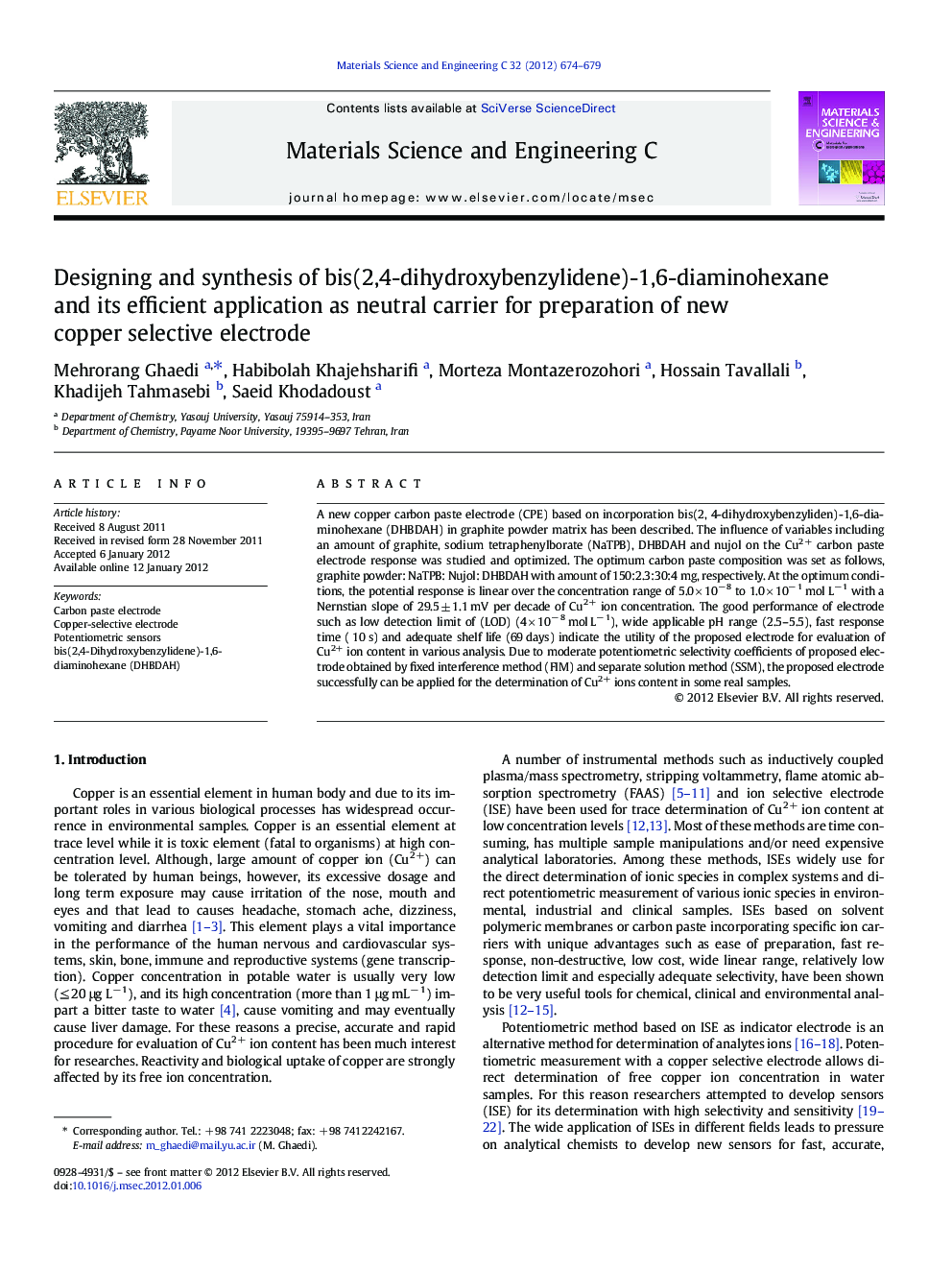| Article ID | Journal | Published Year | Pages | File Type |
|---|---|---|---|---|
| 1429610 | Materials Science and Engineering: C | 2012 | 6 Pages |
A new copper carbon paste electrode (CPE) based on incorporation bis(2, 4-dihydroxybenzyliden)-1,6-diaminohexane (DHBDAH) in graphite powder matrix has been described. The influence of variables including an amount of graphite, sodium tetraphenylborate (NaTPB), DHBDAH and nujol on the Cu2+ carbon paste electrode response was studied and optimized. The optimum carbon paste composition was set as follows, graphite powder: NaTPB: Nujol: DHBDAH with amount of 150:2.3:30:4 mg, respectively. At the optimum conditions, the potential response is linear over the concentration range of 5.0 × 10− 8 to 1.0 × 10− 1 mol L− 1 with a Nernstian slope of 29.5 ± 1.1 mV per decade of Cu2+ ion concentration. The good performance of electrode such as low detection limit of (LOD) (4 × 10− 8 mol L− 1), wide applicable pH range (2.5–5.5), fast response time (˂10 s) and adequate shelf life (69 days) indicate the utility of the proposed electrode for evaluation of Cu2+ ion content in various analysis. Due to moderate potentiometric selectivity coefficients of proposed electrode obtained by fixed interference method (FIM) and separate solution method (SSM), the proposed electrode successfully can be applied for the determination of Cu2+ ions content in some real samples.
►A new optical sensor is fabricated for determination of copper ion. ►The carbon past composition was optimized to yield optimum performance. ►The proposed electrode was applied successfully to the determination of Cu2+ ion in water samples.
